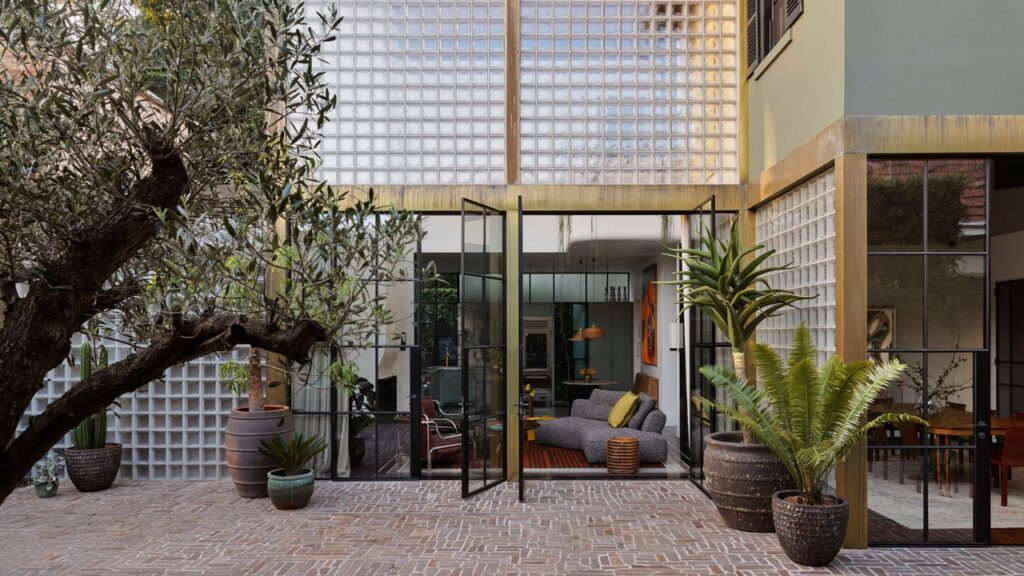Bernard Bijvoet and Pierre Chareau’s 1932 Maison de Verre in Paris inspired Flack’s use of glass blocks as structure in this project, which marks his studio’s first foray into architectural design. (The team now has seven other architecture projects in the works). Inside the day-lit extension—which hosts the living room, kitchen, and a powder room—and throughout the home, he made design moves that add a glowing feel. Glass blocks and steel-framed windows also wrap the dining room and family room. Frosted glass softly illuminates some marble-clad powder rooms and baths. Boldly hued lacquer lightens shadowed surfaces, like the walls, ceiling, and bar front in the front-most room of the historic portion of the house, a space newly re-envisioned as a deep red cocktail lounge, and the now dark green dining ceiling, whose near mirror surface both reflects and references the garden outside.
The house’s original layout was quite formal, which for the more casual Hains, meant many rooms went largely unused. With intentional vintage, contemporary, and custom furnishings, Flack transformed them into spaces with purpose. For example, a double-sided On the Rocks sofa by Francesco Binfaré for Edra centers the cozy library, painted a deep yellow ochre. With twin desks, the room can now be a home office, study, or party space, depending on the occasion. The new kitchen offers a breakfast table with a banquette, “a very daily and comfortable addition” that often ends up as the location of four-person dinners, says the homeowner. “I’m a casual entertainer,” she adds. “I like to keep it fairly simple with my grown-up kids, but this house also has very practical spaces to enjoy with friends and family during bigger events.”


